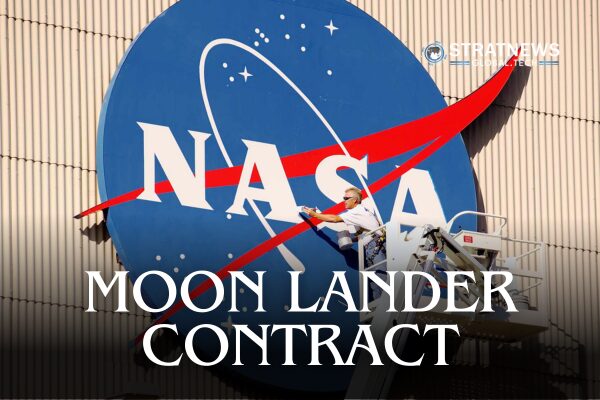NASA Reopens Moon Lander Contract Amid SpaceX Delays
NASA has announced plans to reopen its contract for a lunar lander after delays in SpaceX’s Starship project. The decision, aimed at maintaining the timeline of the Artemis programme, creates new opportunities for rivals such as Jeff Bezos’ Blue Origin and Lockheed Martin to compete for the high-profile mission.
Pressure Mounts on SpaceX
According to acting NASA chief and US Transportation Secretary Sean Duffy, the space agency is inviting new proposals due to concerns over SpaceX’s progress. Speaking on Fox News, Duffy said companies like Blue Origin might soon join the bidding process. The move follows growing frustration within NASA as China accelerates its goal of sending astronauts to the moon by 2030.
SpaceX was originally awarded the lunar lander contract in 2021, valued at $4.4 billion, with a target to land astronauts on the moon by 2027. However, NASA advisers have warned that the project could fall years behind schedule. Duffy noted that while SpaceX continues to innovate, its work on the lunar lander remains delayed. He added that President Donald Trump hopes the mission can be completed before the end of his term in January 2029.
Rivals Ready to Compete
The reopening of the contract marks a major change in NASA’s lunar strategy. Blue Origin, already developing its Blue Moon lander under a separate $3 billion contract, is expected to bid for the Artemis 3 mission. Lockheed Martin has also expressed interest, saying it is collaborating with other aerospace firms to prepare a proposal that meets NASA’s renewed goals.
SpaceX CEO Elon Musk appeared unfazed by the competition. Responding on X, he wrote that SpaceX “is moving like lightning compared to the rest of the space industry” and predicted that Starship would ultimately complete the entire moon mission.
NASA Seeks Faster Progress
NASA has requested that both SpaceX and Blue Origin submit updated and accelerated moon landing plans by 29 October. The agency has also asked other commercial partners for ideas on increasing the pace of lunar missions.
Bob Behnken, Lockheed Martin’s vice president for Exploration and Technology Strategy, confirmed that his company has been conducting extensive analysis on human lunar lander designs this year. He said Lockheed Martin looks forward to contributing to the nation’s lunar ambitions.
The Artemis programme, involving several contractors including Boeing and Northrop Grumman, is designed to establish a lasting human presence on the moon. Artemis 2, a planned 10-day mission around the moon, is currently set for April but could be advanced to February.
with inputs from Reuters


